Kombucha
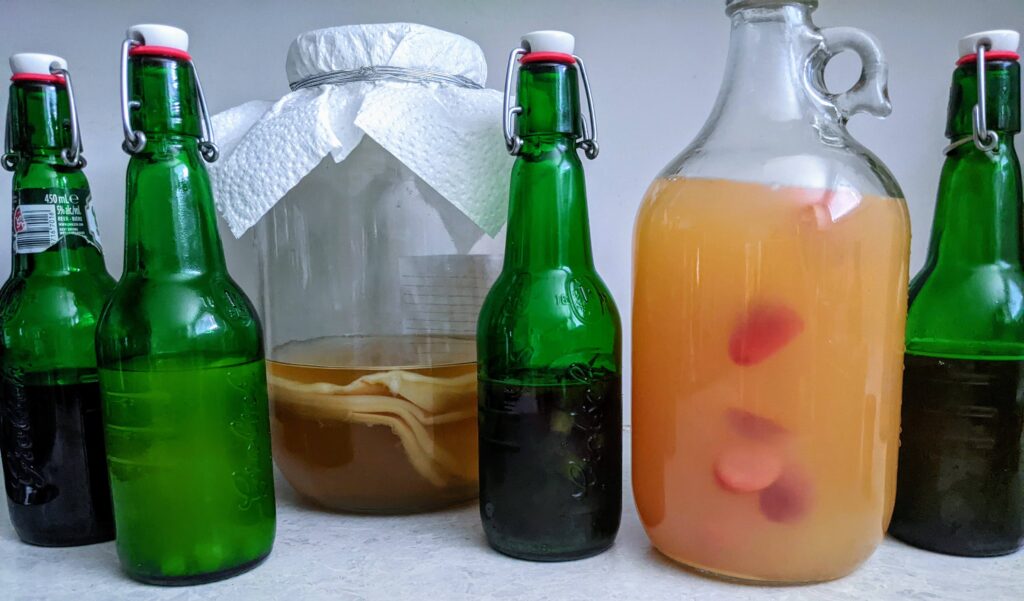
The kombucha “mushroom” has been used for millennia, quite literally. There is documentation of its use back 9000 years to China, mostly for the creation of alcoholic beverages. The fermented beverage has recently become popular for the incredible health benefits it has to offer while being a more desirable alternative to carbonated soft drinks.
Kombucha is a sweetened beverage, typically made with black tea and fermented with the kombucha mother, which is a gelatinous colony of bacteria and yeast. It is often referred to as a kombucha mushroom or Manchurian mushroom but does not truly belong to the mushroom classification.
To begin fermenting you will require a kombucha mother, also known as a SCOBY (Symbiotic Culture Of Bacteria & Yeast).
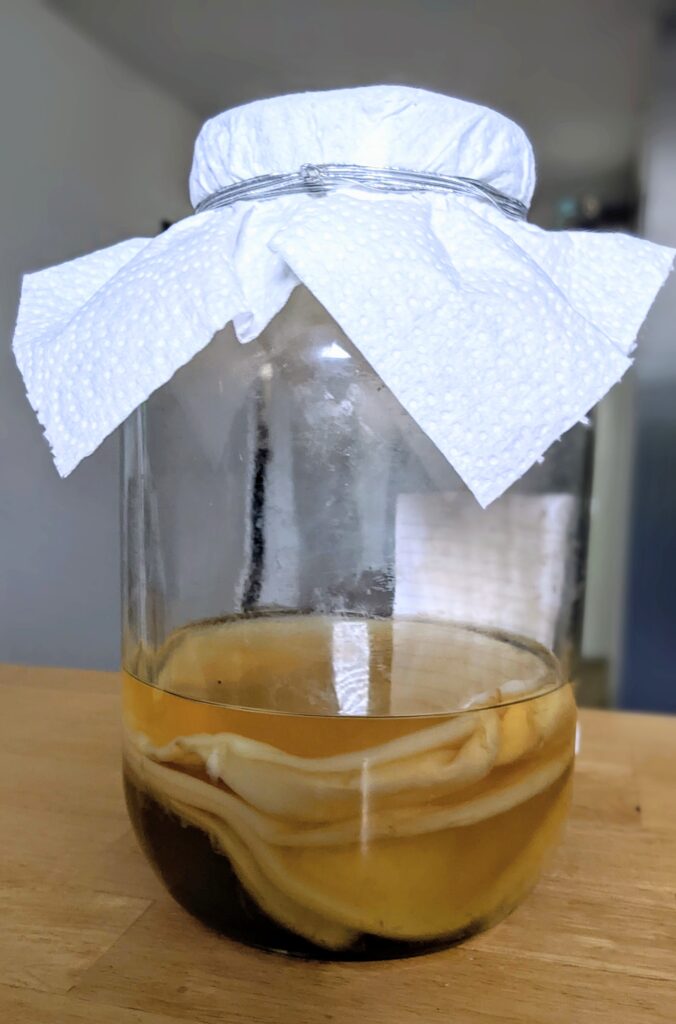
If you are trying to allocate one you can often reach out to your community and find a kombucha enthusiast who is more than willing to share a SCOBY (these mushrooms reproduce quickly!). If not, packaged kombucha mothers can be ordered online or found at some health & wellness stores. You can even purchase a commercial kombucha drink and find a brand new mother forming at the bottom of the bottle. It will be small and appear as a clear disc, resembling a jellyfish in consistency but it will grow larger if you continue to feed it.
Just like kefir grains, the kombucha mother will create a fizzy, fermented beverage and reproduce itself in stacks.
The first step in making your own kombucha beverage is brewing the liquid that will become your drink and feed your SCOBY. Begin by boiling one litre (4 cups) of water, best if free from chlorine.
To the boiled water, add and steep 1 tablespoon of loose black or green tea (or two teabags) to the boiled water until it has cooled to body temperature (at least 15-30 minutes) or lower before adding the SCOBY. You don’t want it to be exposed to high heat. Green or black tea are used most frequently for kombucha as they provide the adequate nutrients to the SCOBY. Other herbal tea blends have been used, however, and are a nice alternative if you need to avoid caffeine. It is important to avoid using any that contain high volatile oil content, such as peppermint, chamomile or lavender, as the oil can kill the bacteria and yeast cultures. Even earl grey tea has the volatile oil of bergamot and could harm the SCOBY. Some herbal teas that have been used successfully in the brew include nettle leaf, dandelion leaf or raspberry leaf.
Next add ¼ cup sugar and stir. Sugar is necessary to fuel the metabolic reaction of the kombucha and most of it will be consumed by the time you are ready to collect the liquid.
Cane sugar or white sugar seem to yield the best results. Unfortunately honey cannot be used as the antibiotic properties can harm the SCOBY as does the molasses content of brown sugar. Coconut sugar can also be less useful as it has been found more challenging for the SCOBY to metabolize. As you may guess, sugar alcohols and zero-carbohydrate sweeteners such as xylitol, erythritol or stevia will not work with kombucha because the yeast component can’t break them down.
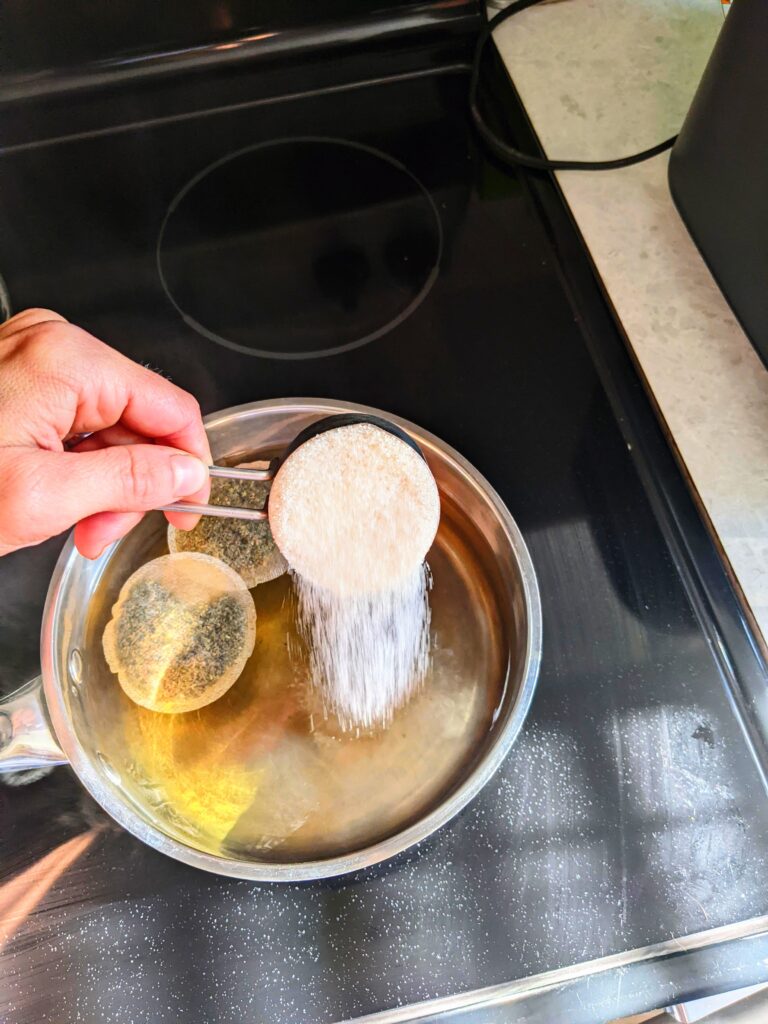
Once cooled, strain the tea into a wide glass container so that the SCOBY will have a large surface area to span out (it’s best if the diameter of the container is greater than the depth of the liquid). Now add the SCOBY with the firm, opaque side up. Cover the container with a cloth, to avoid debris and contamination in but allow oxygen flow, and store in a warm area.
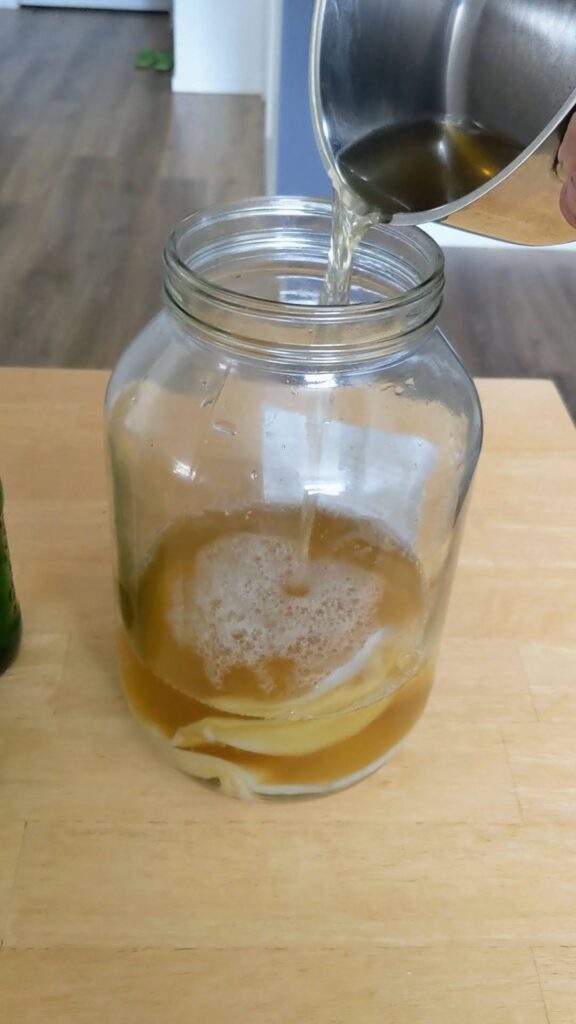
Place the SCOBY with the firm, opaque side up in a clean wide glass container so that it will have a large surface area to span out (it’s best to choose a container with a diameter greater than the depth of the liquid but not critical). Once cooled, cover the container with a cloth or paper towel to avoid debris and contamination but allow oxygen flow, and store in a warm area.
After one to two weeks another layer will begin to reproduce on the SCOBY. The longer the kombucha liquid sits, the more acidic it will become. You can taste the liquid to see how sweet or sour you like it and then pour it out when you are satisfied. You can take this fermented liquid and drink it as it is or you can begin a second ferment to make it flavoured and/or fizzy.
You can then start a new batch to store the SCOBY in. If you didn’t want another batch to drink right away, you can always store the SCOBY in the liquid in the fridge. The cold environment slows the fermentation process so it can go longer before needing a new tea. They will continue to reproduce each time and you can either pass the SCOBYs on to friends, compost them, or even consume them as food!
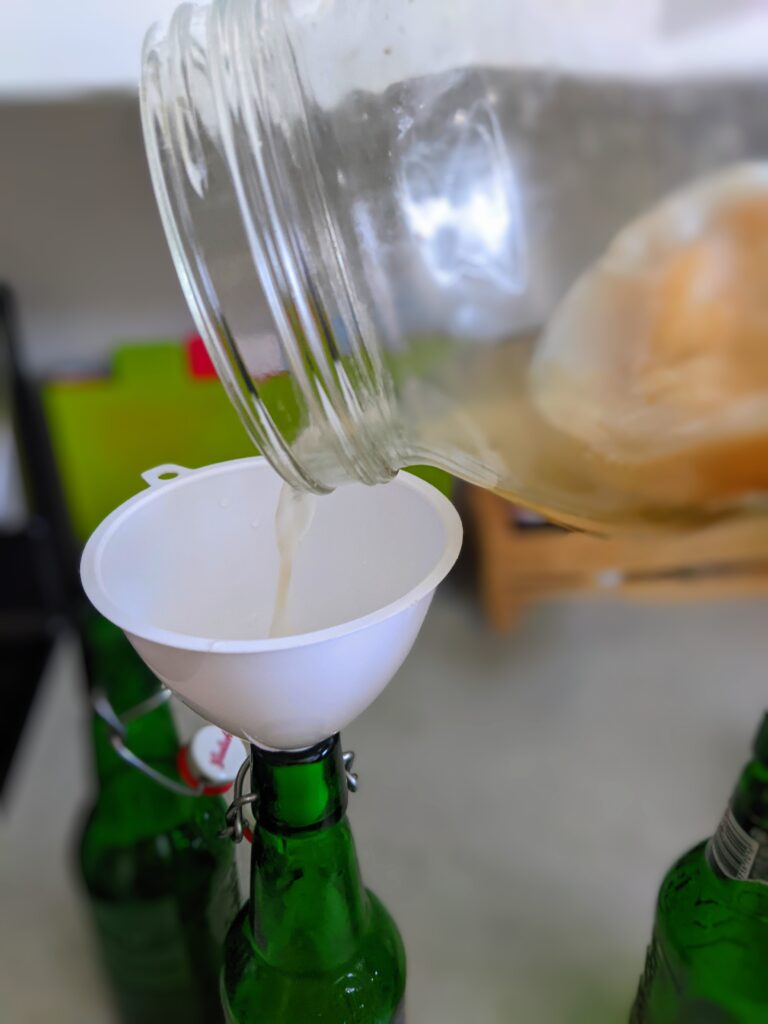
To make a second ferment with your strained off liquid, add pure fruit juice, fruit slices, 1 – 2 tsp of sugar (to taste), fresh herbs or other ingredients. Here you are able to use ingredients with more volatile oils such as ginger or mint but it is still best to keep them in low amounts so you can receive the benefits of the healthy bacterial culture present in the liquid. Let the liquid sit in an airtight container at room temperature for several days until it is as fizzy as you like it.
I like to record the date I’ve changed strained the ferment and added the fresh tea so that I don’t lose track of time. I prefer it on the more sour side so I usually let it go a whole 2 weeks before collecting the fermented liquid.
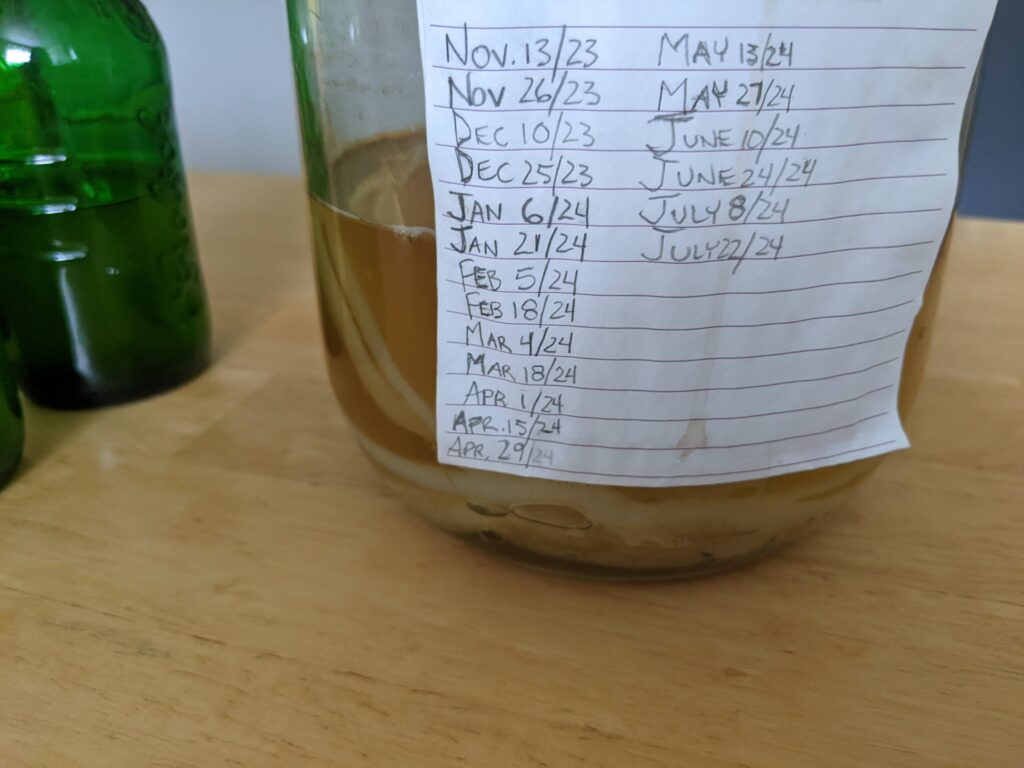
While fermenting the bacteria will be expelling a gas so make sure you open the lid to release pressure once daily to avoid explosion!
All content contained herein is intended for general information purposes and is not to be considered professional medical advice. Contact a reputable healthcare practitioner if you are in need of medical attention.
